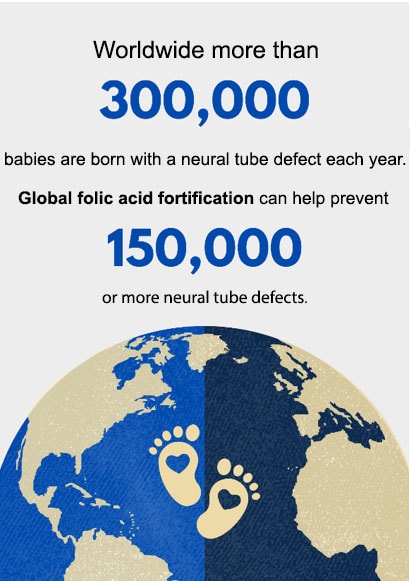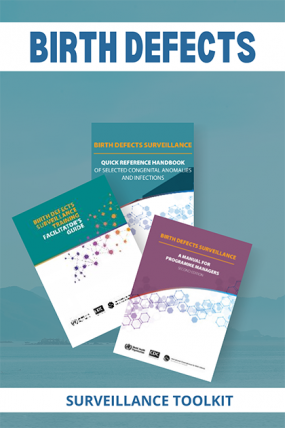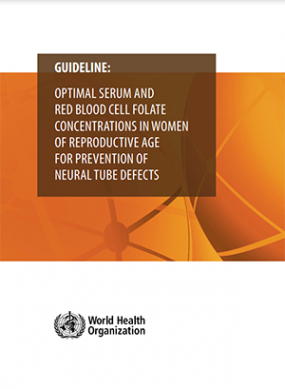Neural Tube Defects Prevention Around the World

Neural tube defects are serious birth defects of the brain and spine. The two most common neural tube defects are spina bifida and anencephaly. These defects happen very early in pregnancy when the neural tube, which becomes the brain and the spine, does not close properly. Worldwide there are more than 300,000 babies who are born with a neural tube defect each year. Expanding the reach of global folic acid fortification in low- and middle-resource countries can prevent 150,000–210,000 neural tube defects each year1.
Prevention Efforts
United States
In 1992, the U.S. Public Health Service recommended that all women of childbearing age capable of becoming pregnant consume 400 mcg of folic acid daily to prevent neural tube defects.
By 1998 in the United States, folic acid was added to all enriched cereal grain products, like breads and pastas, and some breakfast cereals. This process is called folic acid fortification. In the United States, fortification led to a 35% decrease in the rate of neural tube defects (1, 2, 3, 5). Fortifying foods with folic acid is an effective way to increase a woman’s intake of folic acid without changing her dietary habits.
Worldwide
Globally, most neural tube defects are not being prevented4. Expanding the reach of global folic acid fortification in low- and middle-resource countries can lead to the prevention of 150,000–210,000 neural tube defects each year1. Countries such as Chile, South Africa, Canada and Costa Rica have seen a decrease in neural tube defects as a result of fortification. These successes can serve as examples or models to other countries considering fortification with folic acid.
Resources

Birth Defects Surveillance Toolkit
Developed in collaboration with the World Health Organization and the International Clearinghouse for Birth Defects Surveillance and Research, the Birth Defects Surveillance Toolkit is primarily for use by low- and middle-resource countries developing or strengthening birth defects surveillance programs.
CDC developed an interactive online portal that houses all the technical assistance products within the toolkit.

World Health Organization: Guideline on Optimal Serum and Red Blood Cell Folate Concentrations in Women of Reproductive Age for Prevention of Neural Tube Defects
The purpose of the guideline is to define the level of red blood cell folate concentrations in a population that is sufficient for the prevention of neural tube defects.
References
- Centers for Disease Control and Prevention. CDC grand rounds: additional opportunities to prevent neural tube defects with folic acid fortification. MMWR – Morbidity & Mortality Weekly Report. 2010;59(31):980-4.
- Czeizel AE, Dudas I. Prevention of the first occurrence of neural-tube defects by periconceptional vitamin supplementation. N Engl J Med. 1992 Dec 24;327(26):1832-5.
- Prevention of neural tube defects: results of the Medical Research Council Vitamin Study. MRC Vitamin Study Research Group. Lancet. 1991 Jul 20;338(8760):131-7.
- Oakley GP, Jr. The scientific basis for eliminating folic acid-preventable spina bifida: a modern miracle from epidemiology. Ann Epidemiol. 2009;19(4):226-30.
- Updated Estimates of Neural Tube Defects Prevented by Mandatory Folic Acid Fortification — United States, 1995–2011. MMWR Morb Mort Wkly Rep. 2015: 64(01); 1-5.